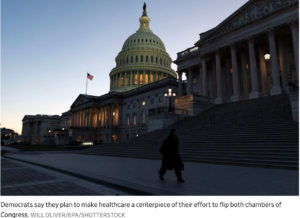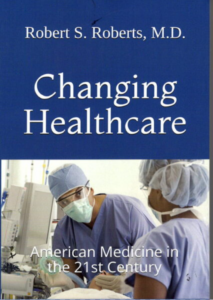
You wouldn’t think of calling an arsonist to put out a fire. But that’s essentially what Democrats are telling the public. They set fire on the American healthcare system with their unilateral change of the system to ObamaCare (ACA) in 2010 without a single Republican vote, yet now they want the American people to believe they’re the best ones to fix the problem. They made promises of a cheaper system that would not separate you from your doctor, but now they’re unrepentant when all those promises were broken.
Republicans have been trying to fix the problem ever since, but every time they try their efforts are thwarted by Democrats, and even some of their own. This is healthcare madness!
The problem is Democrats believe in socialized medicine – complete government control of all healthcare – and ObamaCare is their best ticket to achieve that goal. They don’t care that costs are skyrocketing due to the intrinsic problems of ObamaCare. That only gives them more excuses to ramp up government subsidies. They did that under the Biden administration using the Covid pandemic as an excuse for “temporarily increased subsidies.”
But nothing in Washington is ever “temporary.” Now they want these subsidies to become permanent, or at least extended another three years without any changes to the system. That’s what they demanded in the government shutdown that lasted 42 days and that’s still what they are demanding. They’re trying to convince the American people they’re looking out for them, when they’re really just looking out for their socialized medicine agenda and whatever political advantage they can achieve making Republicans look uncompassionate.
Natalie Andrews, writing for The Wall Street Journal, says, “Republicans suffered through a recurring nightmare this week: their inability to replace or at least unwind the Affordable Care Act, President Barack Obama’s signature healthcare program.”
For the past decade, President Trump and the party have raged against the 2010 law, only to see legislative attempts to decouple it from the American economy fail. This week was no different, as a Republican proposal to replace ACA subsidies with sending federal funds directly to some households for out-of-pocket healthcare costs failed to advance in the Republican-controlled Senate. Although Republicans hold a slim majority in the Senate, it takes 60 votes to advance legislation.
The focus on health-insurance premiums has moved the political discussion onto one of the few topics on which Democrats have an advantage. Americans’ approval of the ACA edged up to a new high of 57% in December, according to a Gallup poll. An NBC poll in October found that Democrats hold a 23-point advantage among registered voters over Republicans on the party best equipped to deal with healthcare. In other words, these people want the arsonists to put out the fire!
This simply shows the ignorance of the average voter. This was clearly demonstrated in New York City recently when they elected a socialist mayor who made them promises he’ll never be able to keep. Democrats in Congress are doing the same thing with healthcare. They are relying on the ignorance of the electorate when it comes to the evils of socialism, especially as it concerns socialized medicine.
In every socialized medicine system in the world, the people get free healthcare (albeit with greatly increased taxes) which inevitably leads to reduced access to healthcare (long waiting times), rationed healthcare (when it costs too much) and denied healthcare when the government determines the elderly and the disabled don’t merit the expense. The American people don’t want this, but they’ll get exactly that if they give Democrats the political power they want.



